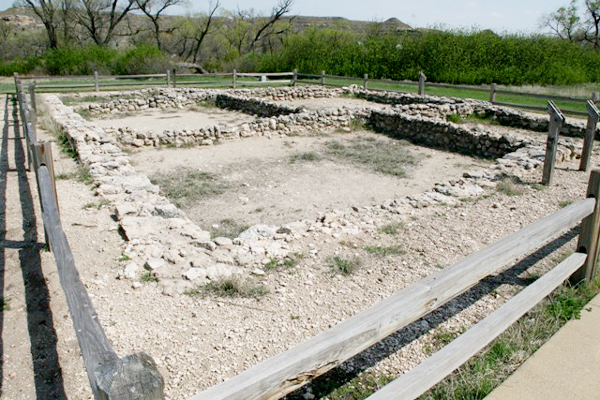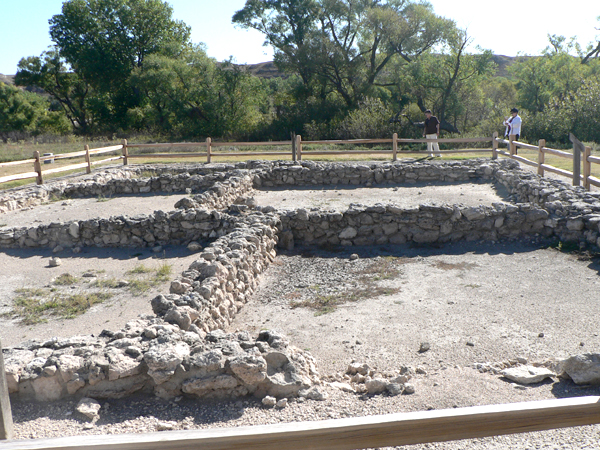Address: 101 W. Lake Scott Drive, Scott City, KS 67861
Phone: 620.872.2061
Website: tinyurl.com/8u9m77q
El Cuartelejo
 |
| El Cuartelejo (also spelled "Quartelejo"), the Picurie Indian Pueblo located in Lake Scott State Park in western Kansas. Photo KSF |
According to Spanish accounts, two groups of Pueblo Indians fled into the Plains to escape Spanish rule. The first were the Taos Indians who settled with a band of Plains Apache about 1664 and remained for several years. Their village became known as El Cuartelejo and the local Apaches as the Cuartelejo band. The second were Picuris who joined the Apache in 1696 and were returned to New Mexico ten years later by Juan de Ulibarri.
A Spanish
expedition of some 100 men under Pedro de Villazur camped at El Cuartelejo in
1720 on its way north to determine the location and strength of the French to the
north and east. About 150 miles north,
the Spanish were attacked and most of them killed by Pawnee Indians said to be
under French direction. 
Another view of the ruins. Photo courtesy Betty Latoush
Following
this, the Spanish considered making El Cuartelejo a military outpost but the
plan was dropped. Indians reported
French traders at the settlement in 1727. A few years later, Comanche, Ute, and Pawnee
attacks forced the Cuartelejo Apache southward out of the Plains and El
Cuartelejo was abandoned.
Stone from the
surrounding hills was used to build the El Cuartelejo pueblo. Walls were plastered inside
and out with adobe, and the roof was made of willow poles or brush covered with
mud. When first excavated, abundant charcoal, burned tools, adobe, and quantities
of the charred corn were found, all evidence that the pueblo had been destroyed
by fire. There were no indications of doors or windows, and small paired post holes
in the corners of most rooms suggested entrance by ladders through openings in
the roof.
In 1889,
archeological excavations located and
exposed the lower portions of stone walls of a pueblo in Scott County, Kansas. The ruins together with the recovered artifacts,
stone and bone tools, ornaments and pottery shards characteristic of Plains
Apaches led to the identification of this site as that of the historic El
Cuartelejo.
In 1970, the
Kansas State Historical Society undertook additional archeological
investigations. At this time all that
remained were portions of the stone hearths, two sections of the outer wall and
several post holes. Interpretive markers
were placed at the site, and it is open to the public throughout the year. The It is a short walk from the road leading to the ruins. Photo KSF
All that remains of El Cuartelejo are the excavated foundations of the
pueblo. Signs are currently being replaced but look for a brochure at the site of the ruins.